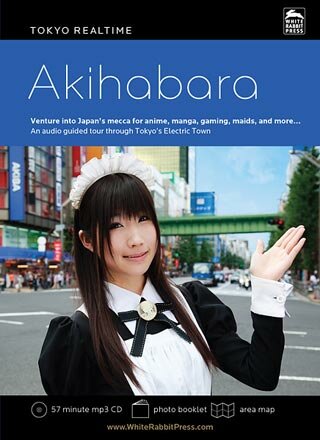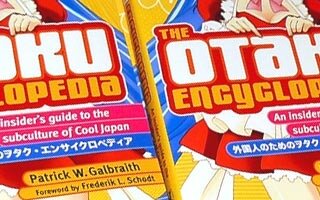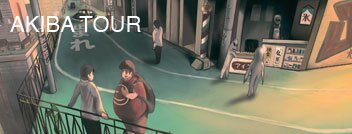24.07.2010 · by Patrick W. Galbraith
Michael Arias, an American making anime

As part of the Summer Institute of Studies in Japanese Popular Culture, Temple University Japan Campus had a guest lecture by Michael Arias, an American born Japanese film and anime director, producer and visual affects artist. Arias is the first and thus far only American to have directed feature-length Japanese films, including the 2007 anime feature, "Tekkon Kinkreet." He was also the producer of "The Animatrix."
Arias started his career in Hollywood as a special effects artist on such films as "The Abyss" and "Total Recall." He was 20 at the time. His advice for those wanting to repeat his success? "Learn a skill." Arias says he was always a techie sort of guy, and so when asked what he could do, he said he could work the machines that moved the cameras during special effects filming. He also was, as he put it, "a closet model maker," which later became another set of job skills.
Fascinating for me was the fact that Arias was not into anime or manga. What exactly brought him to Japan, you say? "Back to the Future: The Ride." Arias was in the United States working on the special effects for the project, which employed many model makers from Japan. He spoke Japanese and was into model making, which proved helpful in making friends. Special effects guru Douglas Trumbull invited Arias to come with him to Japan to finish "Back to the Future: The Ride" (which now only continues to operate in Japan, apparently).
It was 1990 and the first time in Japan for Arias, who fell in love with the technology. Robots that deliver files around the office, even up elevators to different floors. Those fancy robot toilets. The incredibly advanced 3D computer graphics (how things have changed!). He accepted a job with Imagica and moved to Tokyo in 1991.
Arias told the class how in 1995 he was living in Tokyo with an unemployed graphic designer, who was a real manga fanatic. Arias had some down time, and asked his roommate to introduce him to a great manga. What he got was Matsumoto Taiyo's "Tekkon Kinkreet." He went into it still thinking that comics were about superheroes like in the States, but he came out a changed man.
"I was totally into it," he said. "I carried it around with me for years."
When asked why it became so important for him, Arias said it just resonated. He grew up with a younger brother and could relate to the relationship between the two young protagonists. The setting of the manga reminded him of the area of Tokyo where he was living. The "unmoored and rapidly evolving environment" struck him as somehow true.
"I projected onto it, and it reflected back to me," Arias said.
He decided to make a film out of it, a process that took a decade. He converted a karaoke room in Harajuku into a studio, got friends together and spend one and a half years making a pilot. He later met Matsumoto and got permission to go ahead with the film.
"I felt like we were putting on a school play, or we were at a school festival," Arias recalled, indicating the sense of community and creativity involved.
Studio 4C's Morimoto Koji was directing the pilot, but later dropped out. The money ran out, the landlords started cutting the power and interrupting work, they lost the karaoke room, team members started leaving.
"I was just left with the feeling that the technology was not there, the money was not there," Arias said. "Everyone was burned out."
While working on "The Animatrix," Arias was also working on a script for "Tekkon Kinkreet." His close relationship with Studio 4C made the project possible once again. This time, Tanaka Eiko, cofounder of 4C, said he would produce and Arias could direct it himself.
The project enjoyed a prolonged preproduction period, where Arias did location scouting and tried to recreate a world that was, as Matsumoto put it, a child's toy box turned upside down. He decided to use smaller-sized sheets for the drawings, which made the imperfections and inconsistencies of the image stand out. Images were not framed precisely, and backgrounds tended to be much larger than necessary to allow for free play in the filming.




Arias estimated that the whole movie had something like 1,600 shots. Some animators worked on only a few, others 50 or more. In another interesting move, Arias wanted to have all the people working on the project in the same room. The result was cross pollination, competition, creativity and a tight community. Being in the same room also meant the everything could be managed manually. Arias joked: "Our network was brown manilla envelopes. Our backup was a copy machine. Our asset management system was file cabinets."
Arias pointed out that he changed the ending to the manga, which returned to where the story began in a very cyclical way, and instead inserted the burning tower. The idea was to emphasize change and have a dramatic conclusion. This was also inspired by his experience of the Kobe Earthquake and Aum Shrinkyo terrorist attacks in 1995, and sitting with the scriptwriter watching the images of the burning World Trade Center in New York.
"Tekkon Kinkreet" won the Japan Academy Award for Best Animation in 2008, Japan's Noboro Ofuji award and was selected by Museum of Modern Art curator Barbra London as one of the "Ten Best Films of 2006" in her annual review for "Art Forum" magazine.
Though he jokes that he is the only foreigner "stupid enough" to attempt to direct anime, Arias described the experience rather fondly.
"There are a lot more blood, sweat and tears put into anime than a live-action film," he said. "I was with the crew for three and a half years. We were a tight-knit family. You don't really get that with many live-action films. You have to create each frame, and put more time and energy into it. A good animated film tends to last in a different way. Animation is, I would say, timeless."
He was, however, skeptical about the future of traditional animation. "You can't make it in Hollywood anymore. It is too expensive and not enough people know the craft. Japan is really the only place left where you can still do 2D animation. I wish Japan would invest a little more in its home-grown crafts. Fewer and fewer young people are getting into animation, because the work is hard and it doesn't pay well. The people who become animators now do it less because they want to and more because it is all they can do. They draw."
Animation is still "a boys' club," so they don't meet anyone inside the studio. They are too busy and poor to meet people outside the studio. The result is a lot of frustrated young men.
"The risk is that they burn out," Arias said. "It is impossible to have a family when you are sleeping on the floor of the studio."
He also pointed out the bad working conditions. "Pixar and Blue Sky take care of their people" in a way Japanese studios don't. "Studio Ghibli is a country club compared to most of the production houses."
He continued: "I have grave doubts about the future of anime in Japan, which is really sad, since it is the best place to do traditional animation."
Arias has since directed the live-action feature film "Heaven's Door" (2009) and the "Kokoro no Hane" PV for the sensational idol group AKB 48 (2010). The PV was made by many of the same staff who worked on "Tekkon Kinkreet," and was storyboarded like an anime. It features backgrounds by always excellent Kimura Shinji. The video is far better than it deserves to be (I love AKB, but let's be honest), and just goes to show just how talented Arias really is.
Tags: Anime International 1 Comment
18.12.2009 · by Adrian A. Lozano
Patrick heads to AniFusion NYC

While sifting through a few piles of "Droppings" over at one of our
fellow comrade's online portholes; I was pointed to some free PR for AniFusion NYC. Thanks for the laugh by the way. So if you happen to be in New York the event will be taking place this Sunday December 20th over at Forbidden Planet New York City. As always Patrick is happy to talk about his research and personal opinion about the pros and cons of the Otaku status in and outside of Japan.
“AniFusion NYC: A One-Day Celebration of American/Japanese-Pop Fusion” on Sunday, December 20, 2009 from 2:00 PM ~ 5:00 PM at Forbidden City (212 Avenue A, New York, NY 1009, between 13th and 14th).
Tags: Otaku International Academic 0 Comments
07.12.2009 · by Patrick W. Galbraith
Otaku academic conference in Ottawa

I will be presenting on the potential, and limits, of moe and talking about my . Thomas LaMarre, who recently published a on anime, will also be in attendance. I believe in addition to our presentations we will dialogue about otaku. Looking forward to seeing how the event turns out! BTW, the name of the conference is in fact "Oniichan, what does moe mean?" This was not my idea, and yes, this is a real event. Just in case there are any doubts.
2010年1月にカナダのオタワ大学で「おたく」というテーマで学術発表会が開かれます。私は「萌え」について発表する予定で、トマス・ラマール先生はアニメについて発表するようです。それから、私と先生はおたくの社会的生態について対話します。因に、発表会のタイトルは「お兄ちゃん、萌えって何?」になってしまいました。本当に。これはネタではありません!
27.10.2009 · by Patrick W. Galbraith
Taiwan's maid cafe

Just came across this place mat from Fatimaid, a maid cafe in Taiwan. It caused quite a ruckus back in 2006, and seems to still be going strong. Awesome!
台湾のメイド喫茶、Fatimaidからのものです!向こうに行ってきた友達が見せてくれましたので、写真を撮ってみました。
Tags: Maids International 0 Comments
15.03.2009 · by Patrick W. Galbraith
Otaku2 featured by British journalists
Check out the story here. Thanks to Danny Choo for the introduction, and hope his hay fever is better!
















